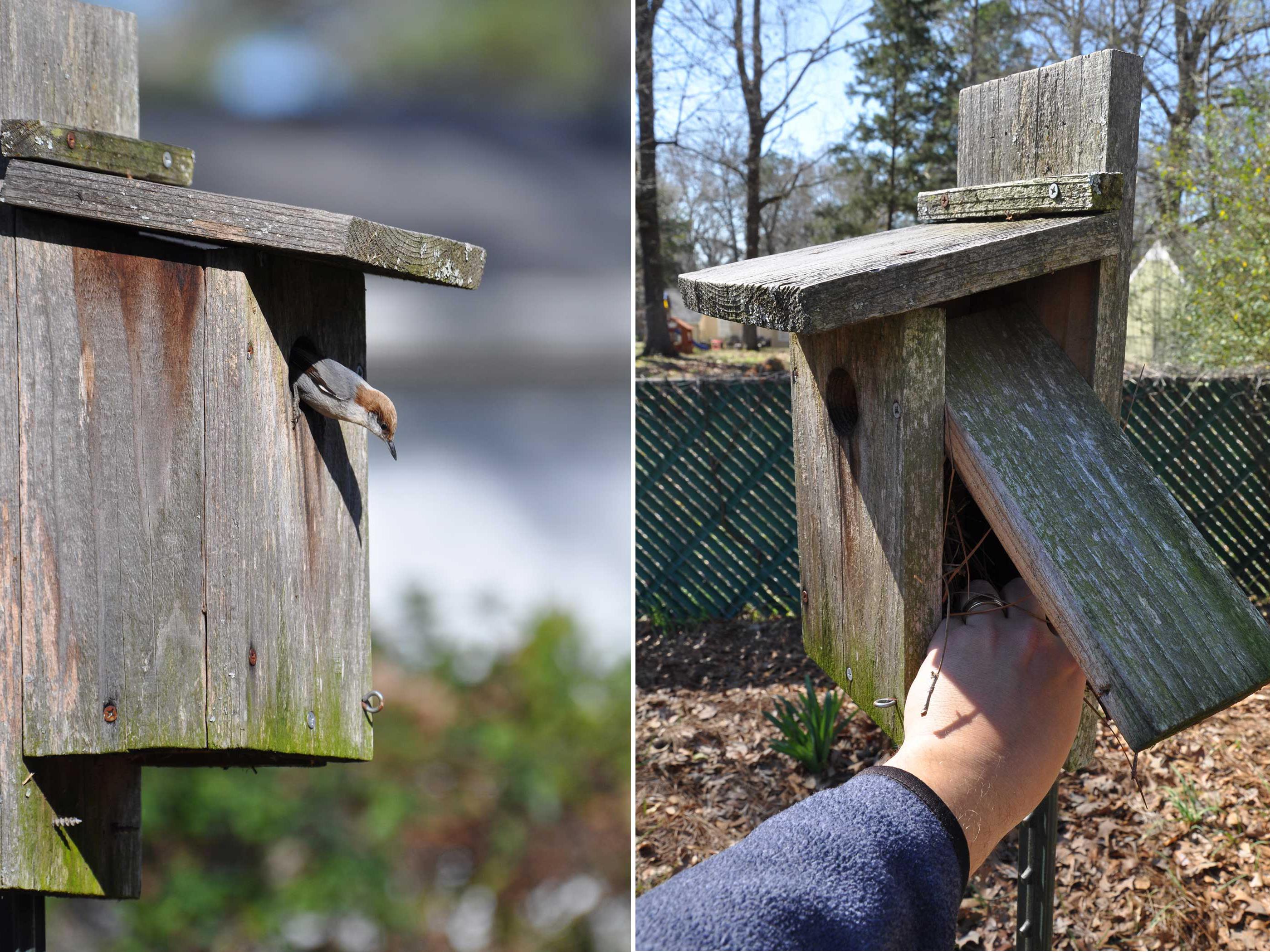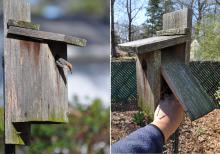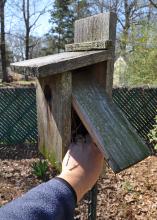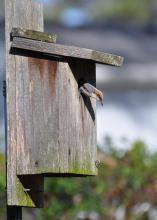Information Possibly Outdated
The information presented on this page was originally released on April 1, 2016. It may not be outdated, but please search our site for more current information. If you plan to quote or reference this information in a publication, please check with the Extension specialist or author before proceeding.
How to choose the best birdfeeder, seed
RAYMOND, Miss. -- One of the key elements of creating a wildlife-friendly yard is providing areas for animals to nest.
Trees, shrubs and other vegetation already present in landscapes provide many nesting options for birds and mammals, such as northern mockingbirds and eastern gray squirrels. Chickadees, bluebirds, nuthatches, prothonotary warblers and some other birds require tree cavities, which are in short supply in most residential landscapes because most natural cavities form in dead or dying trees. Often the fastest remedy for the lack of natural cavities is to erect nest boxes, but first, follow a few simple steps to increase the chances for success.
Understand the Bird -- Learn about the habitat needs for the bird species that you want to attract to the nest box. For example, during the breeding season, bluebirds capture insects midflight and on the ground, which requires generally open yards of grass and a few trees for perching sites. This habitat is common in rural and urban parts of the state. Spend time in early spring observing bluebird activity levels in your neighborhood to determine if your yard is suitable for them. If you see several birds, put up a nest box and see what happens.
Type of Nest Box -- Once you decide your yard is suitable for the species of interest, identify the correct nest box for it to use. You can find nest box plans and ready-built nest boxes on the Internet and by contacting your local Mississippi State University Extension Service office. The size and dimensions of the box itself and the entrance hole are very important for each species. Correctly designed nest box entrances reduce use by competitor bird species and squirrels. For more information and species-specific nest box designs, see http://nestwatch.org/learn/all-about-birdhouses/.
Location -- Correct placement of the nest box in the yard is a must. Again, each species of bird has specific requirements that need to be followed when setting up a nest box. Generally speaking, placing the nest boxes at least 5 feet off the ground and 50 to 200 feet from wooded edges greatly reduces predators and other competitors like starlings, house sparrows and wrens. Locate nest boxes away from high disturbance areas, including walkways, driveways and spots where pets are active. If you are erecting multiple nest boxes, a general rule of thumb is to space them at least 100 yards apart to reduce competition between nesting birds.
Timing -- In Mississippi, February and March are the best months to erect a new nest box or repair and clean out an existing one. Most nest boxes are made of natural wood like cedar or cypress. Painting is not recommended as it interferes with the breathability of the wood and the internal temperature of the nest box.
Predators -- No nest box is complete without a predator guard. Installing metal cones or cylinders on the pole at least a foot below the nest box protects young birds from mammals and snakes attempting to access the box from the ground. Placing nest boxes on buildings, fences or other structures can make them more accessible to predators, so I don’t recommend this placement.
Following these simple steps can lead to a lot of excitement for you and your family during spring and summer while providing critical nesting areas for birds.

Editor’s Note: Extension Outdoors is a column authored by several different experts in the Mississippi State University Extension Service.











